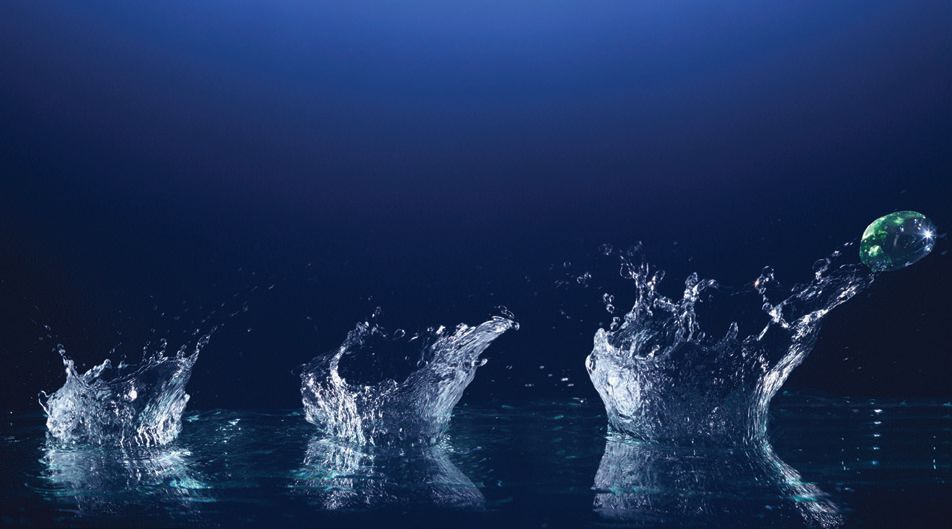Flick of the Wrist
Evan Zabawski | TLT From the Editor July 2016
Summertime physics lessons at the lake.

A successful throw requires three key elements: spin, speed and angle.
© Can Stock Photo Inc. / 831days
DEPENDING ON WHERE YOU LIVE, the answer to a crossword clue for an eight-letter word for “bouncing a stone over water” could be skipping, skimming or skiffing. I prefer skipping, but I apply it to rocks, rather than stones, which then raises the question, “Is there a difference?”
In his book Stone by Stone, Robert Thorson writes, “Rock is raw material
in situ. Stone usually connotes either human handling or human use, although it can also be used to describe naturally produced fragments of rock larger than a cobble.”
The Oxford English Dictionary (OED) defines rock as “a large rugged mass of hard mineral material or stone,” originating from Old English, dated at 950-1100. The OED defines stone as “a piece of rock or hard mineral substance of a small or moderate size,” with the word first used in 825. I guess one might say that all rocks are stones, but not all stones are rocks.
In any event, the physics of skipping stones was once thought to be attributed to the elasticity of water until 18th Century Italian physiologist Lazzaro Spallanzani discovered that the stone generates lift in the same manner as a flying disc, by pushing water down as it moves across the water at an angle.
It was only recently that French physicist Lydéric Bocquet defined the conditions for a successful throw in his paper The Physics of Stone Skipping, American Journal of Physics, Vol. 71, No. 2, February 2003. He concluded that of the three key elements (speed, spin and angle) the angle of impact was the most crucial. The magic angle is 20 degrees, irrespective of speed and spin. Obviously, the leading edge of the stone should be slightly higher than the trailing edge to prevent it from diving or submarine-ing, and the spin is what helps maintain this attitude.
Bocquet has calculated that for a stone to skip five times it needs to spin five times per second, but to skip 15 times it only needs to increase to nine times per second, and for 38 skips it should spin 14 times per second. As such, champion stone skippers prefer imperfect stones with a chip or point along the edge which allows for gripping with the index finger to be able to impart as much spin as possible.
This concept was not lost on Sir Barnes Neville Wallis, the English engineer who invented the “bouncing bombs” that the Royal Air Force used to breach the Möhne and Eder dams in Germany. The mission, codenamed Chastise, was immortalized in Paul Brickhill’s 1951 book, The Dam Busters, which was made into the 1955 movie of the same name.
Since his bombs were to be drum-shaped, they were given a backspin to encourage them to bounce, much like Wallis had observed with cricket balls. Dropped from a height of only 18 meters (60 feet) above the water, at a flying speed of 373 km/h (232 mph), with a backspin of 500 rpm, the 4,196 kg (9250 lb.) Upkeep bombs bounced over the torpedo nets for nearly 730 m (800 yards) before striking the dam, where residual backspin would force the bombs to sink down along the wall of the dam and trigger the depth-sensitive charge at the dam’s weakest point. This certainly wasn’t the first case of the military employing bouncing projectiles; 19th century sailors angled cannonballs to skip along the water rather than lobbing them through the air, which required greater precision.
The Waboba (Water Bouncing Ball) introduced in 2005 shows us that an elastic sphere works even better; when it strikes the water it flattens and increase its surface area yielding a four-fold increase in lifting force propelling it out of the water. This allows the thrower to be less concerned about the angle (still bounces well at up to 40 degrees) and negates the need for spin.
So we have come full-circle from the original thought about the elasticity of the water to realizing it is the elasticity of the projectile. Even so, I’m going to stick with rocks.
 Evan Zabawski, CLS, is a reliability specialist based in Calgary, Alberta, Canada. You can reach him at evan.zabawski@gmail.com
Evan Zabawski, CLS, is a reliability specialist based in Calgary, Alberta, Canada. You can reach him at evan.zabawski@gmail.com.